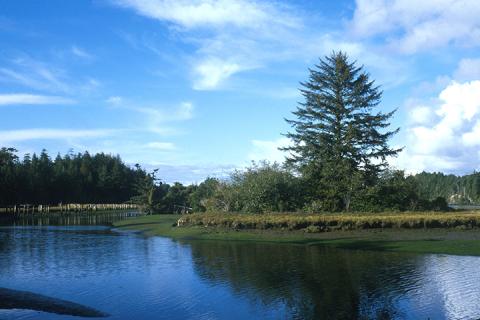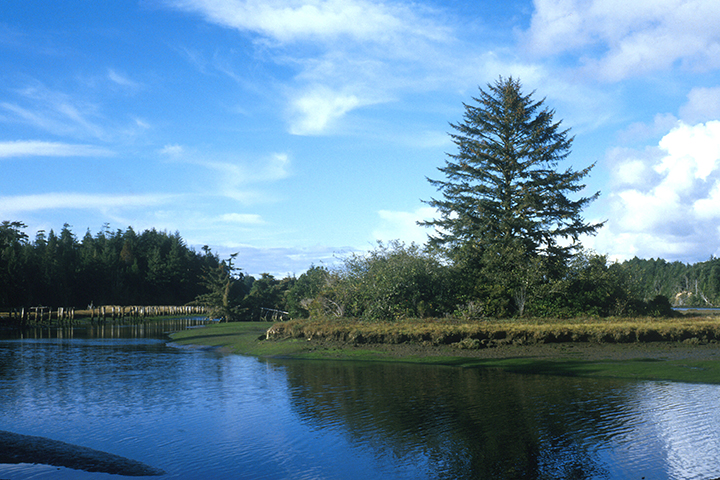
University, reserve, and restoration practitioners partnered to understand social perceptions of saltmarsh restoration in Oregon to identify ways to better incorporate socially relevant information in restoration metrics, increase outreach efficacy and, ultimately, improve restoration success.
The project
Understanding why estuarine habitat restoration is viewed as successful or not is critical for evaluating completed projects and garnering support for future projects. Particularly important, and often overlooked, are the perceptions of partners and the surrounding community which play an integral role in shaping the future of coastal habitats. Restoration metrics rarely include human dimensions even though community support for restoration can promote or thwart potential projects and the long-term success of completed projects. Working with the South Slough NERR, this catalyst project worked to more fully account for and understand the impacts of estuarine habitat restoration by developing social metrics for restoration success and linking them to ecological monitoring metrics.
Using South Slough NERR, The Wetlands Conservancy, and other restoration projects in Oregon as case studies, the project involved a two-pronged approach to data collection. This included 1) synthesis of existing and newly collected ecological data from nine salt marsh restoration projects to derive commonly used ecological metrics and 2) focus groups in three Oregon locations (South Slough, Alsea, and Yaquina) to understand public perceptions about marshes. The team then connected the social and ecological datasets conceptually to create a matrix linking the datasets and indicating mismatches between ecological data and social values. Based on these steps, the team was able to provide recommendations to help improve restoration design and implementation, including more inclusive and effective communications surrounding estuarine restoration.
The impact
- Increased awareness among restoration practitioners in the region about the value of social metrics and interest in how to survey the public about their views and involve them in restoration.
- Thanks to the project brochure, practitioners in the region are better equipped to reach out to community members to help facilitate restoration and planning objectives, and communicate restoration success in a way that is consistent with public perceptions.
- Restoration practitioners also have detailed recommendations about how to take steps to incorporate both social and ecological metrics in restoration design and implementation.
